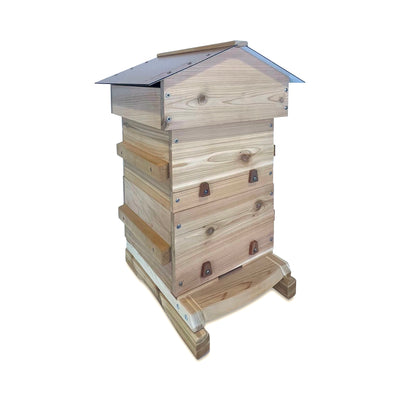The Basics of Your First Hive Inspection
The Basics of Your First Hive Inspection
By Taryn Murphy
You’ve overwintered your bees, and now the weather is warming up. What should you do during your first spring hive inspection?
Choose a sunny day after the first warm spell (over 60 degrees) with little to no wind. As you approach the hive, observe the entrance and the hive’s surroundings. Look for bee poop on the ground or any dead bees at the entrance or near the hive. Note whether bees are flying in and out of the entrance.
Lift the hive lid to inspect the inside. The main goals of inspecting your hive are: 1) to make sure your bees are still alive and 2) to check their food stores. While a few dead bees are normal, your hive should still have a cluster of live bees. Start checking the frames, looking for the queen and any eggs or brood. If you see eggs, congrats! You’ve still got a queen. If you don’t see any eggs or brood, we suggest you order a new queen.
One more thing to note is how your hive behaves. Do the bees seem aggressive? If so, they may be being pestered by predators at night (we suggest a hive stand to ward off pests and rodents).
Next, check to see if the colony has honey. If you live in a colder area, the honey may crystallize over the winter and look like sparkly white dots. Don’t worry--your bees can still eat this. If you don’t see honey, or if stores seem low, feed honey or sugar water to your bees. You can read more about spring feeding here.
Lastly, check your frames for any chalkbrood, wax moths, or small hive beetles. Clean off your bottom board by tilting it and scraping it with a hive tool. If you use a solid bottom board and find Varroa mites on it, we suggest switching to a screened bottom board.
Great going! You've made your first hive inspection.






Leave a comment